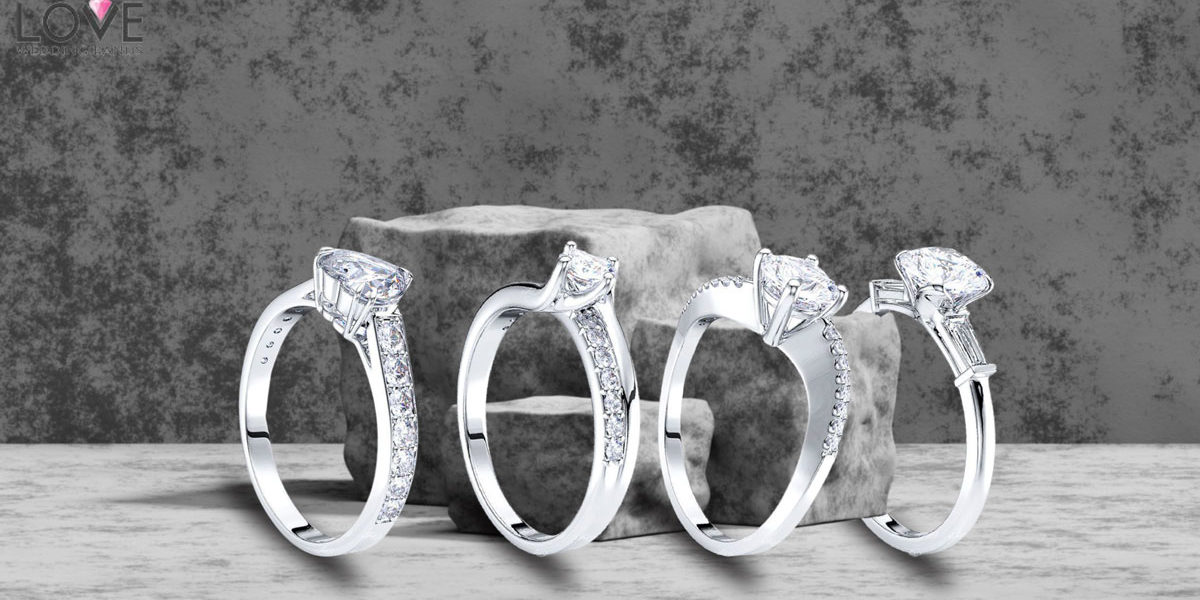Engagement Rings Fundamentals Explained
Engagement Rings Fundamentals Explained
Blog Article
The 6-Minute Rule for Engagement Rings
Table of ContentsEngagement Rings for DummiesThe 10-Second Trick For Engagement RingsNot known Facts About Engagement RingsEngagement Rings Can Be Fun For EveryoneEngagement Rings for DummiesGetting My Engagement Rings To Work
Tension-style settings likewise give far better security for the gemstone. The majority of tension-style settings are created round brilliant rubies or other rounded gems, but they can be changed to fit lots of other shapes. The setup can likewise be modified to have accent gems around the centre rock or to enable for a side stone on each side of the centre rock.Is not breakable and uses well. Can be personalized. Develops an optical impression of the centre gemstone awaiting the air. Have a contemporary design that contains grace and style - engagement rings. Easy to clean up and maintain. If it has prongs, they can come to be loosened with wear. This is easily fixed by having the ring frequently cleaned and examined by a jeweller.
Not known Facts About Engagement Rings
The very first ring with a true tension setup was made in Vreden, Germany in the 1970s. Ursula Exner and widely known artist Walter Wittek interacted to layout and make this first ring. In the complying with years, various other jewelers designed their own tension setups, along with the much more safe and practical tension-style settings.

This gives the ring a simple, yet trendy beauty that functions well for both men and females's wedding event rings, as well as involvement rings. The flush setting is occasionally also called a gypsy setup. We can not say for certain just how it came to have that name, yet maybe it is because the setup stands for a free spirit.
More About Engagement Rings
Flush setups function well for round, square or rectangular gemstones, but they can be hard to adapt to certain fancy cuts, for example, a heart-shaped diamond. Keeps the gemstones safe and secure.
Reminds the owner to cultivate a complimentary spirit (engagement rings). Given that the treasures are embeded in the shank, they obtain a minimal quantity of light and create much less brilliance. Typically unwise for heart-shaped gems and a few other treasures with expensive cuts. Rings with flush or gypsy setups have been around because the late 1800s.
Jewelry engagement rings have just one centre gemstone on a plain band. Lots of other interaction rings, though, additionally have accent gemstones.
Not known Facts About Engagement Rings
There are 4 settings that are commonly made use of to hold accent gemstones. Castle settings are made directly on the shank of the ring.
The prongs in a castle setting can be straight up and down with straightforward spherical suggestions or they can be reduced at an check that angle so that they appear like fishtails. Castle setups are really versatile.
The smart Trick of Engagement Rings That Nobody is Talking About
The steel sides of the castle setup are constantly cut low, generally in a scallop pattern. This allows much more light to get to the accent gems and increases their radiance. If it is well made, the low scalloped side of the castle setup can additionally create an optical impression. It enables the sides of the gems to be conveniently seen and creates the perception that the treasures are being kept in an invisible setting.
Creates the impression of an unnoticeable setting. The small prongs can come to be loose. We recommend that rings with the castle setup be cleaned up occasionally by a jeweler, so that the prongs can be inspected.
The prongs on a castle setting can capture on garments, but this is uncommon because the prongs are smooth. The castle setup can be used to make stunning eternity rings. The initial eternity rings were created in the 1960s. Those original rings, like infinity rings today, have a row of closely established gemstones totally enclosing their shank.

Engagement Rings Things To Know Before You Buy
The grain setup is a really protected setting. The sides of the network protect the accent treasures from bumps and scratches and the handmade prongs seldom become loosened. One drawback of the bead setup is that the gemstones obtain less light since they are established down in the network. This results in the gems generating a little less brilliance and glimmer.
Every gem in the bead setup is bordered by 4 glossy grains that are level with the top of the shank. These grains capture the light and release their own sparkles everywhere. The grains' glimmers along with the sparkle and shines produced by the accent treasures bring the grain readying to life and give it continual glimmers.
They can use it to make eternity rings, as well as to enhance the basic shank or more elaborate split shank that some engagement rings have. In the standard grain setting, the accent treasures are embeded in one straight line. Sometimes, though, jewelers will certainly enhance the sparkle on an involvement ring by including 2 or even more parallel lines of bead set treasures.
Report this page